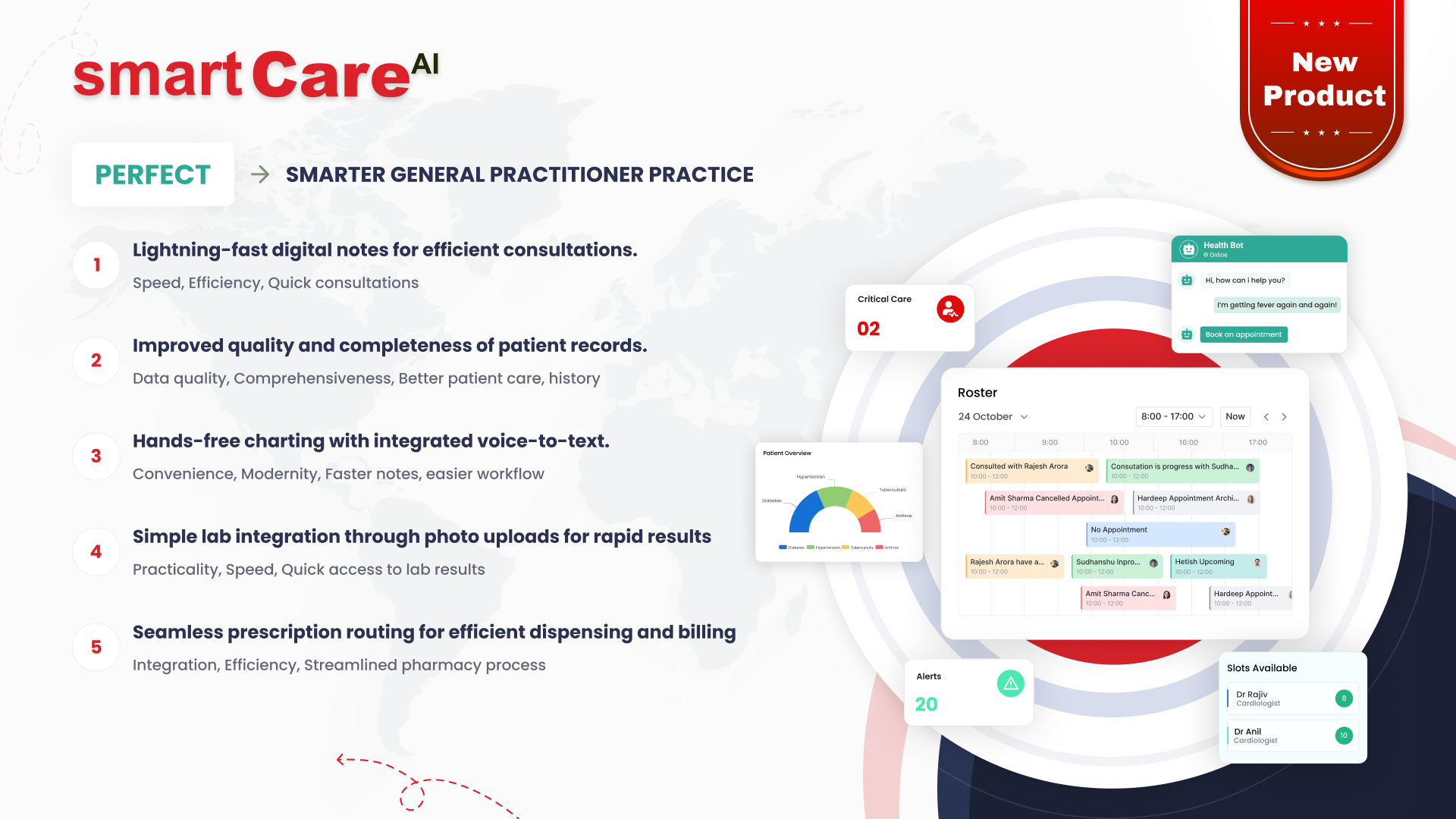
Posted On November 21, 2025
Top Web Development Trends for AI and Healthcare Platforms in 2025
The healthcare industry is rapidly shifting towards digital-first solutions, and 2025 is expected to push this transformation even further. As AI continues to influence diagnostics, patient management, and operational workflows, web development is stepping up to support these advanced capabilities. Modern healthcare platforms now rely on intelligent interfaces, secure systems, and real-time data handling to deliver a smooth experience to both patients and professionals. Here are the top web development trends shaping AI-driven healthcare platforms in 2025.
Growing Role of AI-Driven Interfaces in Healthcare Websites
AI is changing how users interact with healthcare platforms. In 2025, intelligent interfaces powered by machine learning help patients find information faster, book appointments more easily, and receive tailored recommendations based on their health history.
Web developers are building smarter chatbots, symptom checkers and patient support agents that improve engagement and reduce manual workload for healthcare teams. These interfaces bring clarity, speed, and a personalised experience to every visit.
Responsive Design for Medical and Health-Tech Platforms
Healthcare platforms must be accessible across all devices, especially as more patients access medical services through smartphones. Responsive web design ensures consistent user experience whether someone is viewing medical reports, booking consultations, or interacting with AI tools. In 2025, responsive design goes beyond layout adjustments; it involves optimising performance, improving load times, and ensuring accessibility for users of all abilities.
Progressive Web Apps (PWAs) for Better Patient Engagement
PWAs are becoming a preferred choice for health-tech companies because they combine the benefits of websites and mobile apps.
For patients, PWAs offer offline access, fast loading, and app-like functionality without requiring installations. For healthcare providers, they provide a reliable platform for appointment management, health tracking dashboards, and AI-powered notifications. In 2025, PWAs are expected to play an even bigger role in patient outreach and engagement.
Real-Time Data Visualisation for Health Insights
As AI models process huge volumes of medical data, real-time visualisation is essential.
Modern web platforms now display live health insights, patient trends, diagnostic results, and performance reports in an instant. These dashboards help doctors and care teams make faster, more accurate decisions. In 2025, healthcare organisations will rely more on interactive graphs, heat maps and AI-driven analytics to simplify complex information for daily use.
Secure Web Architecture to Protect Sensitive Health Data
Security remains one of the strongest priorities for healthcare web development.
AI systems rely on sensitive patient data, making it crucial to build platforms with strict authentication controls, encrypted communication, and compliant storage systems.
In 2025, developers are adopting zero-trust frameworks, advanced monitoring tools and automated threat detection to ensure complete safety. A secure architecture gives patients confidence and supports long-term digital growth.
Voice-Enabled Features for Accessibility and Convenience
Voice-enabled functionality is becoming a key feature in healthcare platforms. This includes voice search, voice commands, and natural language response tools that help users navigate quickly without relying on manual input. Patients with mobility limitations, senior citizens, and visually impaired users benefit the most.
In AI-powered platforms, voice technology also supports automated patient triage, appointment booking, and symptom queries. As voice recognition becomes more accurate and context-aware in 2025, healthcare platforms will adopt it more widely to improve both speed and accessibility.
Integration of Telehealth With Web Portals
Telehealth is no longer a separate service but an essential part of digital healthcare systems. Modern web portals now include built-in video consultations, digital prescriptions, remote monitoring dashboards, and secure pre-visit forms.
Integrating telehealth features directly into web applications helps healthcare providers streamline patient communication and reduces wait times. AI also plays a role in analysing patient data collected through telehealth tools, offering doctors more accurate insights. In 2025, seamless telehealth integration will continue to be a priority for platforms aiming to deliver complete digital care experiences.
Web APIs for Seamless AI and Medical System Integration
Healthcare systems rely heavily on data coming from multiple sources: EHRs, laboratory systems, remote devices, and AI analytics tools. Web APIs simplify the connection between these systems, allowing accurate data sharing in real time.
In 2025, APIs are expected to become more secure, scalable, and standardised across healthcare platforms. This ensures smoother communication between AI engines, mobile apps, and core medical systems. Better API integration also helps developers build modular platforms where features can be added or upgraded without major disruption.
Automated Testing and Continuous Delivery for Health Platforms
Continuous delivery and automated testing are essential for healthcare applications because they must run reliably without downtime or errors. Automated testing ensures that every update passes strict quality checks before going live.
For AI healthcare platforms, automated testing will cover not only coding issues but also model performance, prediction accuracy, and data behaviour. Continuous delivery pipelines make it easier to release improvements quickly while keeping systems stable. In 2025, this approach will become a standard for teams looking to maintain consistent performance and meet strict regulatory requirements.
Privacy-First Web Design: Managing Consent and Compliance
Healthcare platforms handle sensitive patient information, making privacy-focused design non-negotiable. Privacy-first development includes strong data encryption, clear consent mechanisms, secure access controls, and compliance with regulations such as HIPAA, GDPR, or regional equivalents.
AI systems also demand greater transparency, especially when used in diagnosis or patient recommendations. In 2025, privacy-first design will extend to AI explainability, ensuring that patients and clinicians understand how AI-driven decisions are made. Protecting data and maintaining trust will remain a top priority for every healthcare platform.
Conclusion
AI and healthcare continue to evolve together, and web development plays a major role in making this shift possible. From intelligent user interfaces to strong security systems, these trends will shape the digital healthcare experience in 2025 and beyond. To explore modern digital solutions and AI-driven healthcare development, visit https://smartdatainc.com/.
